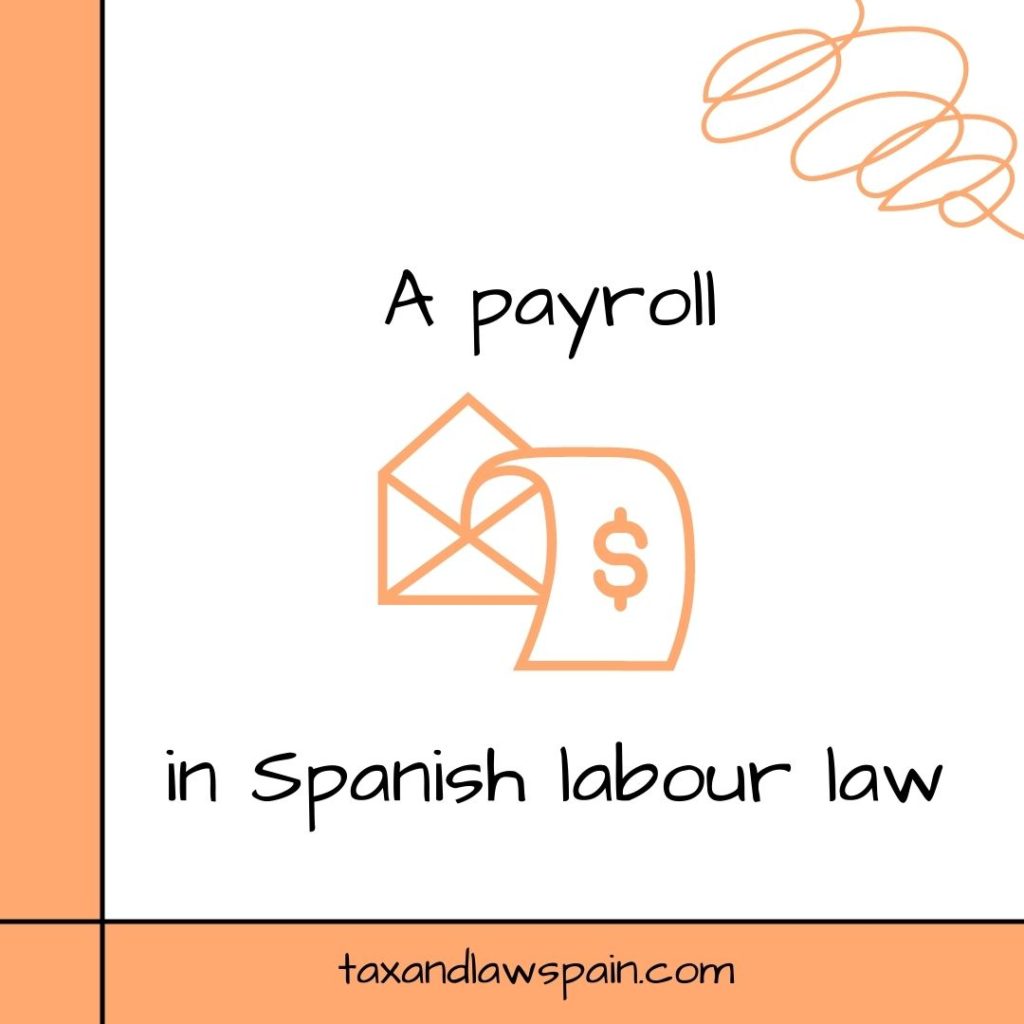Payrolls in Spain
A payroll is a document where the employer informs his employee about the remuneration and the appropriate taxes he has to pay. In another words, in a payroll you can find an information how much does the employee costs the employer.
In this article I will take a look on the payroll in Spanish labour law, explaining especially part II – the particular taxes on the payroll.
The structure of the individual payroll
Each payroll consists of:
-
information about the employer
-
information about the worker (name and surname, ID card number, Social Security number, job category, contribution group and seniority)
-
the period of time that the payroll is about (usually a month, from the 1st to the last day of the month)
-
devengos – those activities for which the worker receives remuneration (extra hours and regular hours)
-
deductions.
Salary
Salary is the remuneration received by an employee for his work. It must always consist of a base salary. Depending on the remuneration system established in the collective agreement, there may be other benefits such as allowances, bonuses, seniority, etc. In addition, the employer may also include awards or upgrades.
Deductions
In this article I will give particular attention to the deductions, that the employer has to make in order to legally cooperate with the worker. There are different types of contributions and they are divided on the payroll: for ordinary contingencies, for unemployment, for training, for overtime, if made. The percentage of this deduction is usually indicated in the payroll itself and depends on the legislation at the time. In Spanish law, the deductions are:
-
“contingencias comunes” – “social security contributions”. Those are the money which the employee pays every month to the Social Security in order to protect the worker in case he becomes sick or has an accident and was unable to work during the time he recovers. The amount here is 4,7 %. Here I should particularly underline AT y EP, which is “Accidente de trabajo” (accident at work) and “Enfermedad adquirida por causa directa de nuestro trabajo” (sickness acquired as a direct result of work)
-
“desempleo” – unemployment, with the corresponding amount of 1,6 %
-
“formación profesional”- “professional training”, with the amount of deduction of 0,1 %;
Thus, in order to calculate the minimum contribution to be paid to Social Security, percentages must be separated according to the specific deduction.
The second part of the payroll defines the determination of the social security contribution bases and items of the joint deduction and of the base subject to personal income tax withholding and company contribution. Here, we can see how much the employer has to pay for the taxes as well, but the percentage here differs. You should know,
-
The base for “contingencias comunes” – 23,6%. This base is a sum of monthly salary and pro-rata of extraordinary surcharges. The second factor is calculated: number of surcharges x amount/12.
-
“Contingencias profesionales y conceptos de reucadación cojunta’” – professional contingencies and concepts of joint collection. Here, we can distinguish:
-
“AT y EP” – The contribution rate depends on the type of activity carried out by the company, but it will be between 1.5 – 7.15%;
-
“desempleo” – 5,5 % or 6,7%, depending if we are dealing with indefinite-term and fixed-term contracts,
-
“formación profesional” – 0.60 % of the professional contingencies base;
-
“Fondo Garantia Salarial” – “salary guarantee fund” – 0.20% of the professional contingencies base (only the company pays contributions for this concept).
-
-
“cotización adicional horas extraordinarias” – “additional overtime pay”: 23,60 % of the received payment.
-
I.R.P.F. – it is the part of income tax which is deducted by the employer from the worker as an advance on the annual income tax payment. The amount of percentage will differ in each case, because it depends on the employee’s position, income and other information.
How much does the worker receive?
From A (Total devengado) we have to deduct B. (Total a deducir), so that we receive the final amount that the worker will receive.
How much the worker costs?
We have to add the amount A. (Total devengado) to the final amount at the end of the payroll – “total aportación empresa”.
When a worker is receiving the amount pointed out in “liquido” section, take into account that it is not the only amount that the employer has to think about. To this, he has to add “total aportación empresa” and “total a deducir”, which in the case shown on the payroll below, would be (summing up those 2 numbers) – 2118,11. s

Thank you very much for reading this article. Tax&Law Spain can help you to overcome other complex matters regarding the payrolls. If you have questions considering your payroll and you are looking for a professional advice and guidance, you can contact me via WhattsApp (+49 1520 8381499) or e-mail (erica@taxandlawspain.com).



